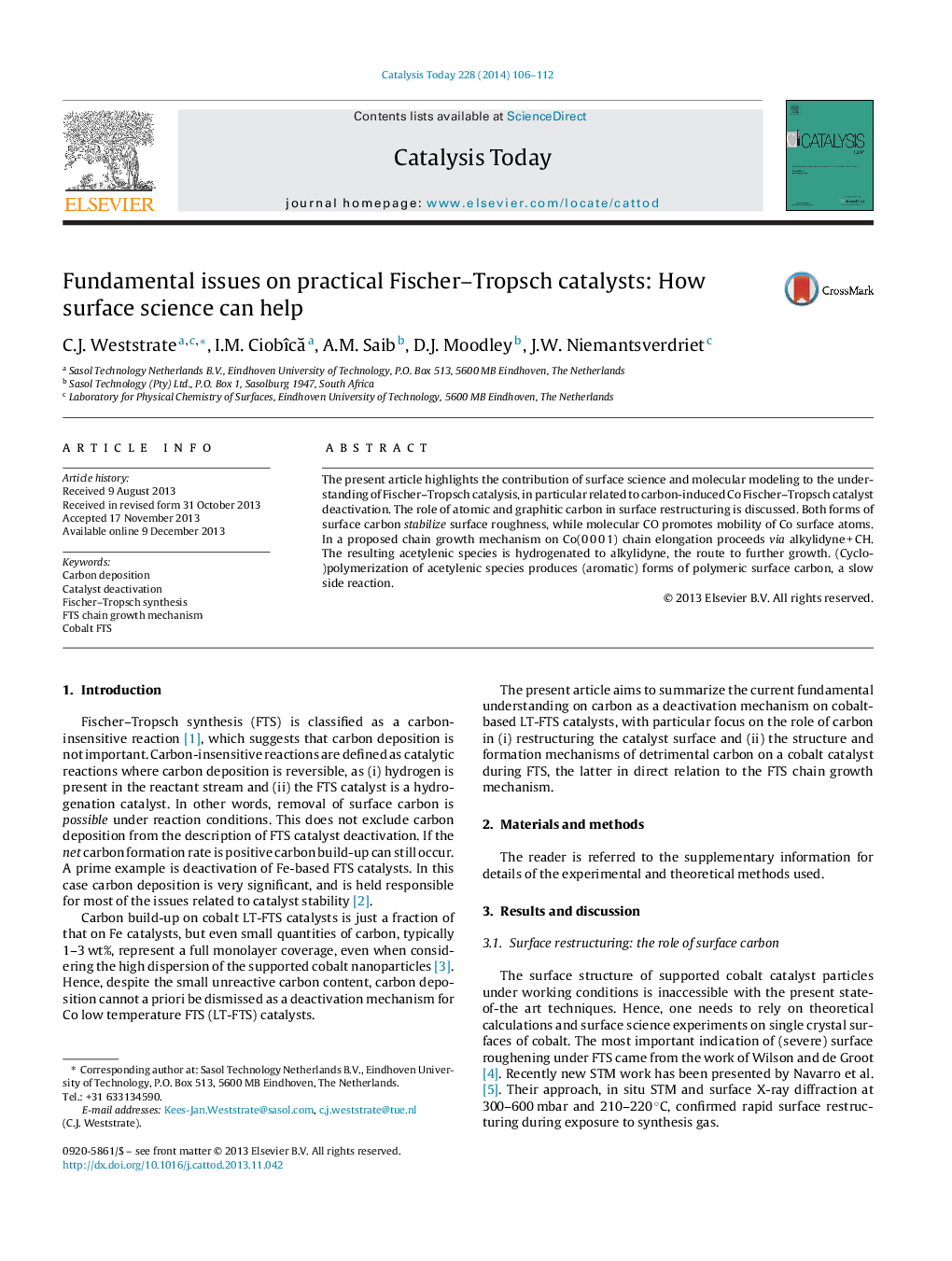| Article ID | Journal | Published Year | Pages | File Type |
|---|---|---|---|---|
| 54133 | Catalysis Today | 2014 | 7 Pages |
•Surface carbon pins down mobile Co sub-carbonyls and stabilizes surface roughness.•Surface alkyne species are facile precursors for aromatic surface carbon during LT-FTS.•Polymeric carbon produced by FTS: aromatic core, attached to steps, with alkyl side chains.•FTS chain growth mechanism: chain initiation via CH + CH → HCCH.•Growth: alkyne HCCR → alkylidyne (CCH2R) + CH → alkyne (HCCCH2R).
The present article highlights the contribution of surface science and molecular modeling to the understanding of Fischer–Tropsch catalysis, in particular related to carbon-induced Co Fischer–Tropsch catalyst deactivation. The role of atomic and graphitic carbon in surface restructuring is discussed. Both forms of surface carbon stabilize surface roughness, while molecular CO promotes mobility of Co surface atoms. In a proposed chain growth mechanism on Co(0 0 0 1) chain elongation proceeds via alkylidyne + CH. The resulting acetylenic species is hydrogenated to alkylidyne, the route to further growth. (Cyclo-)polymerization of acetylenic species produces (aromatic) forms of polymeric surface carbon, a slow side reaction.
Graphical abstractFigure optionsDownload full-size imageDownload high-quality image (92 K)Download as PowerPoint slide
